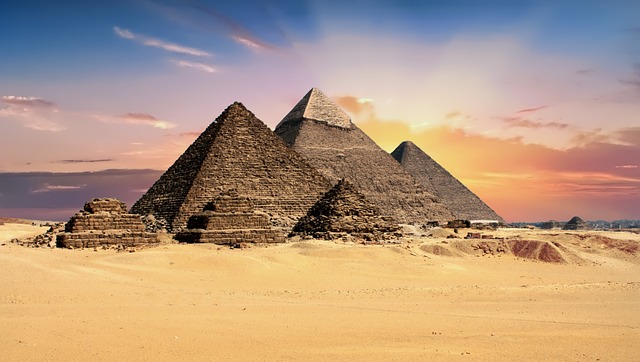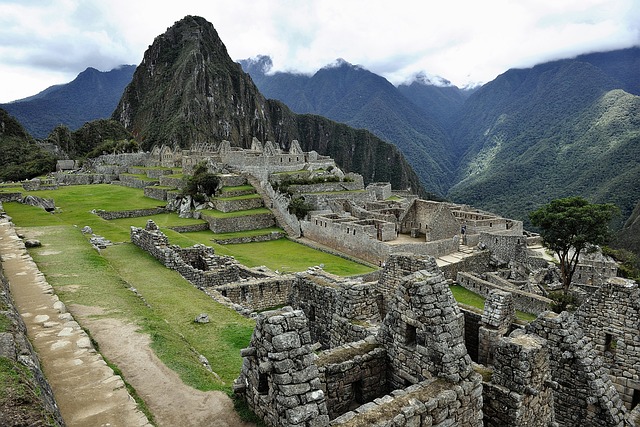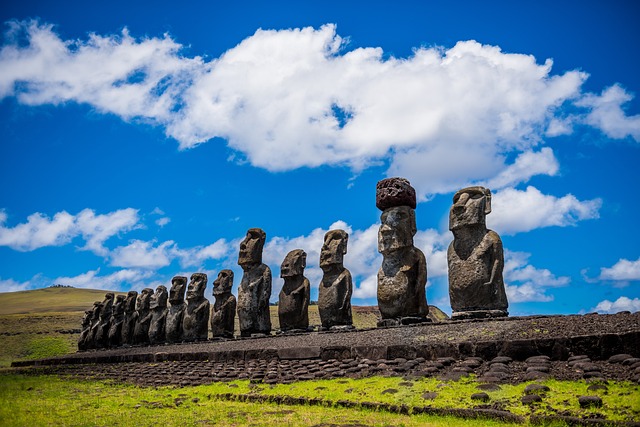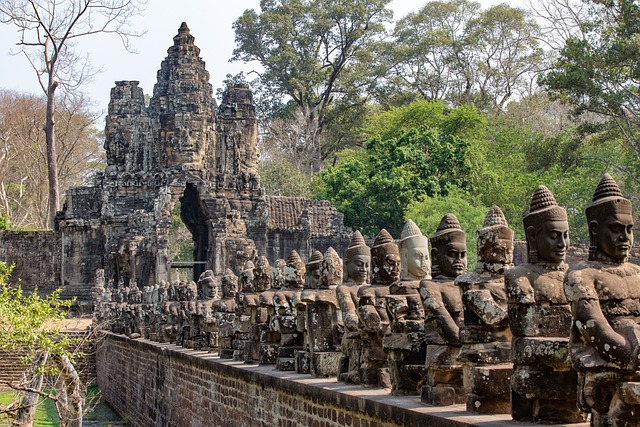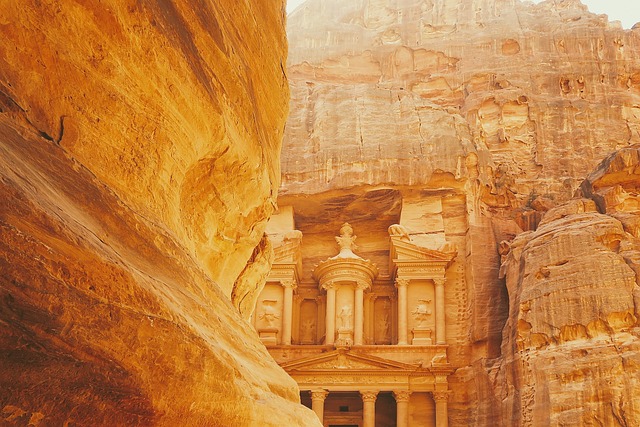Great Wall of China: The Ultimate Guide to Avoiding the Crowds and Finding the Secret Spots
The Great Wall of China, a structure so colossal that it’s rumored ancient astronauts could spot it while cruising in their cosmic convertibles, proudly stands as a testament to China’s historical dedication to “keeping up with the neighbors.” Constructed mainly during the mighty Ming dynasty to protect against invasions, this serpentine stone barricade slithers across China’s northern borders like an earthbound dragon playing an eternal game of hide and seek with invaders. The wall is not only ancient but steeped in a cultural marinade so rich that UNESCO couldn’t help but name it a World Heritage Site.

Visitors to the Wall often find themselves whispering sweet nothings to bricks and selfie-sticking their way into history, trying to capture the essence of a fortification that has seen more drama than a teen’s Snapchat story. As an emblem of China’s enduring strength and ingenuity, the Great Wall stretches over 21,000 kilometers – a distance that would exhaust a marathon runner’s sneaker supply. It’s more than just a wall; it’s a cultural monument, symbolizing the architectural prowess and historical depth of a civilization that throws a heck of a New Year’s party.
While some might argue that the Great Wall’s significance is as inflated as a parade balloon, historians and tourists alike agree that it’s a magnificent relic of human ambition. A visit promises a workout that could challenge even the most dedicated stair master enthusiast, all while offering panoramic views that put high-definition to shame. In its long-standing role, the Great Wall has become an inextricable part of China’s identity, making it an unforgettable encounter for anyone who doesn’t mind a bit of huffing and puffing along the ramparts.
Historic Foundations

In the annals of monumental construction, few feats match the soil-packed might of the Great Wall of China. This stone and earth serpent slithers across China’s historical landscape, embodying the imperial zest for territory and protection.
Building Blocks of Power
The Warring States Period was more than just an era of dinner-party squabbles. It was during this choppy chapter of history that the concept of a wall to fend off nomadic nuisances was first conjured. Enter the first emperor of China, Qin Shi Huang, the man with a plan (and a penchant for immortality). His great idea? Connect existing fortifications and sprinkle in a few more to create a barricade deluxe—the early Wall. This construction wasn’t just for kicks; it was a statement of power, a sort of ancient Chinese “keep out” sign that stretched for miles.
The Great Wall, as it stretched out like a dragon seeking a cosmic latte, was a mixtape of materials—rammed earth, wood, bricks, and whatever the early wall builders could get their hands on. Think of it as the ultimate DIY project, one that successive dynasties couldn’t help but add their own remixes to.
The Dynastic Timeline
Throughout China’s storied past, the Great Wall was a bit like a fashionable wardrobe—it changed with every dynasty’s tastes. The Qin Dynasty set the trend, establishing the Great Wall’s base layer.
| Dynasty | Contribution |
|---|---|
| Qin | Kickstarted the whole shebang, and may have whipped out the first trowel. |
| Han | Spruced things up with fortifications and extended the runway, so to speak. |
| Ming | Took everything up a notch. They got fancy, adding bricks and creating what most picture as the Wall today. |
But the Han Dynasty wasn’t going to let the Qin have all the fun. They extended the Great Wall westward, keeping those pesky Mongolian Express raiders at bay. The Ming Dynasty, on the other hand, brought in the bricks—lots of them—and generally sexed up the Wall to its current poster-child status. They weren’t just building a wall; they were making a statement: “We’ve got the biggest, baddest wall in Ancient China.”
Each section of the wall whispers tales of bygone emperors and their dynastic dreams, all while standing as a totem to China’s enduring culture. The Great Wall wasn’t just a physical barrier; it was a projection of imperial intent, a stone and mortar mix-tape of China’s culture, history, and occasional paranoia. It’s less “Build it and they will come” and more “Build it so they won’t.”
Design and Structure

The majesty of the Great Wall is trumped only by its cunning design and impenetrable structure—no really, it’s quite something. One might suppose it’s merely a really long line of stacked stones, but the tale of its construction and architectural savvy tells a story of innovation that could give modern-day inventors a run for their money.
Walls and Beyond
Let’s talk Walls. They weren’t just a pile of rocks, folks. They were an impressive mix of compacted earth, bricks, stones, and a myriad of other materials that local resources could afford. The wall snaked across daunting terrains, and with an architect’s eye, it blazed a trail that took advantage of natural defensive structures where possible, like rugged mountains and impassable gullies. Many sections of the Great Wall utilized local materials, leading to an impressive patchwork appearance when viewed from a dragon’s vantage point.
- Materials Used: Earth, stones, woods, bricks…
- Function: Defensive fortifications
- Add-ons: Watchtowers, beacon towers…
Specifically, the Great Wall’s SolidWorks 3D CAD design software came a tad later in history, but it would’ve been handy, had ancient builders had access to such tools.
From Earth to Brick
As times changed, so did construction trends. Initially, rammed earth was the go-to—just imagine ancient builders stomping on dirt with the enthusiasm of a thousand tap dancers—it was an effective compaction method. But as threats evolved, brick became the darling of defensive architecture. Not only were they relatively easy to mass-produce given the right set-up, but bricks also facilitated the construction of more sophisticated structures, including watchtowers that offered lookouts for potential invaders and signals for urgent communications.
Transition from Earth to Brick:
- Earth: Easy to gather, quick to shape.
- Brick: Stronger, lasting longer.
In regions of the Wall, such as in Jinshanling, the Great Wall’s transformation from primitive to polished is apparent, showing off a history that’s literally built layer by layer, era by era.
Geography and Reach

The Great Wall of China is not just a marvel of engineering; it’s a geographic mammoth playing a cosmic game of Twister. Stretching across varied terrain, it high-fives Northern China’s mountains and fist-bumps the Gobi desert for good measure.
North to South and In-Between
If you think the Great Wall had just one address, think again. It snakes through provinces like a VIP with multiple homes—starting with Hebei’s sandy toes dipped in the Bohai Sea at Shanhaiguan, then lounging across the hills and plains of Northern China, and finally putting its feet up in Gansu’s desert out west. The Wall didn’t just tiptoe politely; it stomped from Inner Mongolia to Hebei, zigzagging and marking its territory like a determined dragon with a penchant for scenic views.
Borderline Personality
With more mood swings than a teenager, the Wall switches from Natural Barriers such as mountains and rivers to man-made might. It’s the original barrier trendsetter—since 7th century BC, no landscaping project in Gansu Province or anywhere else could secure the border while pulling off such rustic-chic vibes. Serving high-altitude drama, our wall abides by the motto: “Go big or go home (and build a smaller wall).”
Cultural and Historical Impact

As monumental as your aunt’s fruitcake, the Great Wall of China isn’t just a mammoth barricade of stones and bricks; it’s a colossal symbol of historical fortitude and a cornerstone of cultural heritage. It’s as intertwined with Chinese culture as noodles are with soy sauce.
Symbols and Psyche
The Great Wall stands as a silent yet sturdy testament to not only China’s historical defense against invasions but also its cultural tenacity. This wall has become a kind of societal glue, sticking in the collective psyche of a nation and cultures around the globe. Think of it as China’s version of “I’ve got your back.” It even sashayed its way onto the list of UNESCO World Heritage Sites, because just like the perfect selfie, its cultural significance cannot be overstated.
Legends and Lore
Steeped in history and drenched in mythology, tales about the Great Wall are as many as grains of rice in a mega buffet. One crowd-pleaser is the story of Meng Jiangnu, a legend so sticky it has been cemented into the cultural consciousness as much as the Wall itself. This tragic heroine basically showed that crying a river could indeed bring down walls—or at least a part of it. It’s lore like this that knits the Wall’s cultural fabric tighter than your grandpa’s wallet.
Whilst the Wall isn’t exactly traceable on Instagram maps, it was the talk of the Silk Road. Merchants probably gossiped about it at each caravanserai, spreading its fame as they traded silks for spices. Let’s be honest, if the Great Wall had a dating profile, its bio would be: “Long-term, stable, historically significant, looking for admirers.”
The Modern Marvel

They say you haven’t truly seen architectural grandeur until your sneakers tread on the ancient stones of the Great Wall of China. Today, parts like Badaling teem with tourists, each one eager to snap a selfie with history that’s much taller than their tallest friend on stilts.
Preservation and Tourism
The Chinese government has worked tirelessly to preserve this snake of stones. They’ve learned that tourists, much like cats, are curious creatures always on the lookout for an Instagram-worthy spot. The Badaling section is especially polished for the bright eyes of visitors, boasting amenities that the Mongols and Manchus surely never dreamt of.
- Visitor Facilities:
- Restrooms: Cleaner than a nobleman’s conscience after confession.
- Souvenir Shops: Filled with more Wall-themed merchandise than you can shake a stick at.
- Refreshment Stands: To hydrate or caffeinate—an existential question for the weary traveler.
Living Legacy
It’s more than stones put together; it’s a legacy intertwined with the lives of the Chinese. Near Jinshanling, one might find locals donning costumes akin to the days when nomads prowled the lands, adding an authentic flair that’s better than a cherry on top of a sundae.
- Interactions with Locals:
- Costumed Photo Ops: Because what’s a trip without a photo of you standing next to a faux-general of yore?
- Storytelling Sessions: Perfect for those who fancy a good yarn about the days when the Wall was as bustling as Beijing’s subway at rush hour.
The Great Wall stands sturdy as a ripple through time, with every visitor’s footprint adding to the tale. They come, they see, they ‘ooh’ and ‘ahh’—a chorus the Wall has heard for thousands of years, and if it has its way, will hear for thousands more.
Frequently Asked Questions

Curiosity didn’t just kill the cat; it built the world’s longest defense project. Here are the top inquiries tickling the brains of Great Wall enthusiasts.
What’s the real deal behind the construction of the Great Wall? Who thought it’d be a good idea?
It was a ‘wall-building party’ that spanned centuries. Started by Emperor Qin Shi Huang in the 3rd century BCE, the idea was to keep out pesky invaders. Quite the task for the ancient DIY-ers.
How much Wall could a wall-builder build if a wall-builder could build walls? In other words, how lengthy is this thing?
The Great Wall stretches over a staggering 13,000 miles. That’s a lot of stone and sweat!
Could astronauts gawk at the Wall from their spacey bungalow, or is that just a myth?
Space travellers can’t spot the Wall with the naked eye – that’s a tall tale for tourist brochures. Sorry, stargazers!
What’s the lowdown on the stature of this stony snake across China?
This ancient barricade stands up to 20 feet tall in places. It really had one job: be tall, be long, and look intimidating.
Since when has the Great Wall been hogging landscapes, and when did they put the last brick in?
Construction kicked off around the 7th century BCE, and they wrapped up around the 17th century. Talk about a long-term commitment to home improvement.
If I wanted to walk from start to finish, where would I tie my shoes and where would I collapse?
Begin at the eastern point in Shanhaiguan and drag yourself to Jiayuguan in the west. Just make sure to pack comfortable shoes and perhaps a lifetime’s supply of snacks.


